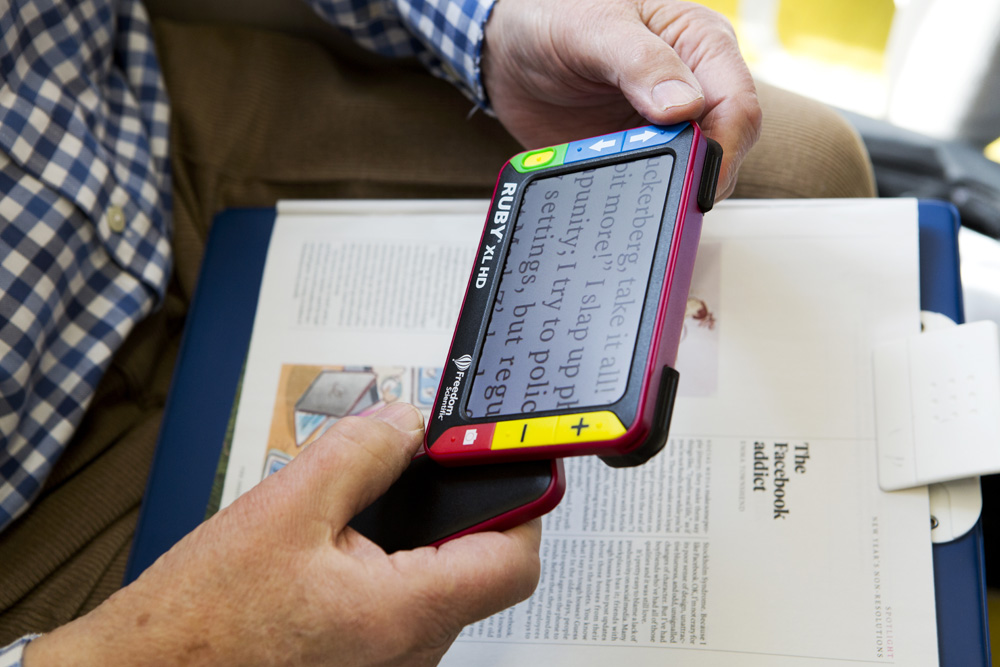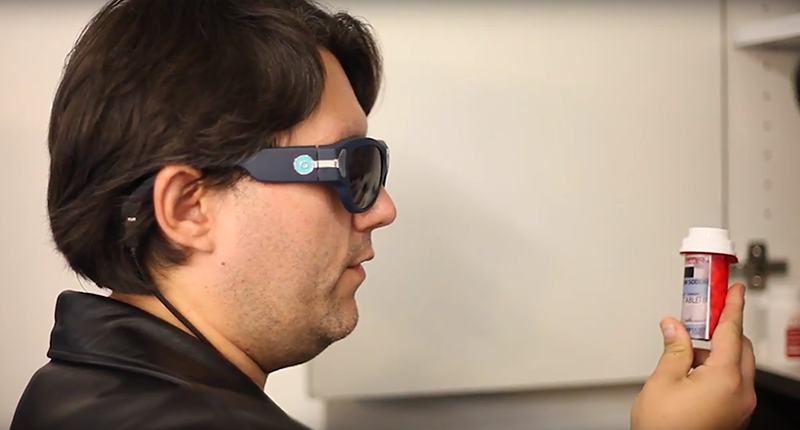Enhance Accessibility with Braille Displays and Notetakers
Enhance Accessibility with Braille Displays and Notetakers
Blog Article
Discover Innovative Tools Made for the Aesthetically Damaged
The growth of ingenious devices for the visually damaged represents a substantial improvement in accessibility and self-reliance. Technologies such as smart glasses with AI abilities and mobile applications made to offer acoustic descriptions are reshaping day-to-day experiences for users.
Smart Glasses for Navigation

Smart glasses designed for navigating are changing the method visually damaged people communicate with their environment. These advanced tools use a combination of camera innovation, expert system, and auditory responses to supply real-time information concerning surroundings. By using challenge discovery systems, wise glasses can alert customers to potential threats, allowing more secure wheelchair in both familiar and unknown setups.
The combination of GPS modern technology even more enhances navigation capacities, enabling customers to receive acoustic directions as they move. This hands-free strategy not only cultivates self-reliance yet additionally empowers aesthetically damaged people to browse metropolitan landscapes with boosted confidence. Additionally, many wise glasses are outfitted with attributes that determine landmarks and road indications, supplying contextual info that boosts the user experience.
In addition, the growth of these gadgets is consistently progressing, with companies working to enhance the precision of item acknowledgment and expand the variety of navigational functions. As clever glasses come to be more available and budget-friendly, they hold the prospective to dramatically change life for visually damaged users. Ultimately, these innovative tools represent a vital action towards inclusivity, offering improved flexibility and a greater sense of autonomy for individuals navigating the world around them.

Mobile Application for Daily Living
Just how can mobile applications enhance the day-to-days live of aesthetically impaired individuals? Mobile applications are revolutionizing the method aesthetically damaged users navigate their settings, take care of daily tasks, and accessibility information. These applications offer crucial support with different capabilities, fostering self-reliance and boosting top quality of life.
Several innovative mobile apps are created especially for daily living. For example, applications like Be My Eyes attach visually damaged users with sighted volunteers by means of video clip telephone calls, allowing them to receive real-time assistance with tasks such as reading labels or navigating unknown areas. Seeing AI, created by Microsoft, utilizes synthetic intelligence to define environments, checked out text, and recognize items, successfully transforming a smart device right into a powerful tool for day-to-day help.
Additionally, navigating applications tailored for the aesthetically impaired, such as Aira and BlindSquare, provide audio-based instructions and ecological information, enabling customers to traverse their surroundings securely and with confidence. Beyond navigation and prompt assistance, mobile applications also sustain organization and job administration, with features that assist users establish pointers, develop to-do listings, and track appointments. In recap, mobile applications serve as important resources, encouraging visually damaged individuals to lead more independent and meeting lives.
Wearable Technologies for Help
Empowerment via innovation is significantly obvious in the world of wearable gadgets made to help aesthetically impaired people. These innovative devices integrate flawlessly into life, improving navigating and offering important responses to individuals. For example, wise glasses geared up with electronic cameras can acknowledge faces and review text out loud, permitting users to connect more with confidence in social and professional settings.
One more significant advancement is using haptic feedback systems in wearable gadgets. These systems use vibrations or other tactile signals to communicate info regarding the individual's setting, such as barriers or adjustments in surface, boosting wheelchair and safety and security. Wearable check modern technologies additionally consist of wristbands that attach to smart devices, signaling customers to alerts via refined resonances, therefore improving connectivity without reliance on visual hints.
As these innovations continue to progress, they are not only boosting freedom for aesthetically impaired individuals but also promoting a higher sense of inclusion in culture. By linking the space between challenges encountered in day-to-day living and the possibility for freedom, wearable innovations function as critical tools in the quest for equality and empowerment for those with visual impairments.
Sound Description Devices
Audio description devices play an important role in enhancing accessibility for aesthetically impaired people, giving them with the capacity to engage with visual media. Wearable technology for low vision. These tools supply narrated summaries of essential aesthetic aspects in movies, television shows, and live efficiencies, making certain that customers can go to this site totally understand the context and feelings shared with visuals
Sound description can be integrated right into various systems, including streaming solutions, cinema testings, and live cinema. Many popular streaming solutions now consist of audio description as an ease of access attribute, allowing customers to pick it easily. In enhancement to conventional media, specialized apps likewise exist, giving audio descriptions for art exhibits, galleries, and various other cultural events.
The efficiency of audio summary hinges on the skill of the storytellers, that must convey visual information succinctly without taking away from the original sound. Innovations in this field are likewise leading the means for more individualized experiences, where users can adjust the level of information and pacing according to their choices.
Braille Innovations and Devices
Braille innovations and tools have considerably transformed the method visually damaged people communicate with text and details. Modern developments have actually led to the development of versatile tools that improve literacy and self-reliance amongst individuals.
In addition, mobile Braille notetakers incorporate traditional Braille input with modern functionalities, helping with note-taking, scheduling, and file modifying on the go. AI-powered visual aids. These small devices frequently feature text-to-speech capabilities, linking the void in between Braille and auditory information
In addition, cutting-edge Braille printers have actually emerged, allowing users to generate Braille tags, papers, and educational materials successfully. This availability promotes greater participation in expert and educational settings, inevitably advertising inclusivity.
Additionally, research right into clever Braille innovations continues to expand. Devices that include fabricated intelligence are being explored to give real-time navigation support and contextual details, improving the user experience in varied setups. In general, these developments mirror a commitment to encouraging visually damaged people through modern technology, ensuring they can easily gain access to and engage with the globe around them.

Conclusion
The advancement of innovative tools for the visually damaged significantly improves self-reliance and quality of life. Smart glasses, mobile applications, wearable innovations, audio summary tools, and Braille developments jointly encourage people by providing important navigating aid, ecological recognition, and boosted analysis experiences. These modern technologies not only foster higher incorporation but also promote autonomy in day-to-day tasks, ultimately adding to an extra obtainable and fair culture for aesthetically impaired people. Proceeded advancement in this field holds assurance for more enhancements.
As wise glasses become a lot more available and cost effective, they hold the potential to substantially change daily life for visually impaired individuals. Mobile applications walk in vision exam near me are transforming the means visually impaired individuals browse their settings, manage daily tasks, and gain access to details. Apps like Be My Eyes connect aesthetically damaged users with sighted volunteers by means of video clip phone calls, enabling them to obtain real-time aid with jobs such as reading labels or navigating unfamiliar areas.Furthermore, navigating applications tailored for the visually impaired, such as Aira and BlindSquare, supply audio-based directions and environmental information, allowing customers to traverse their environments safely and confidently.The development of cutting-edge devices for the aesthetically damaged significantly improves self-reliance and top quality of life.
Report this page